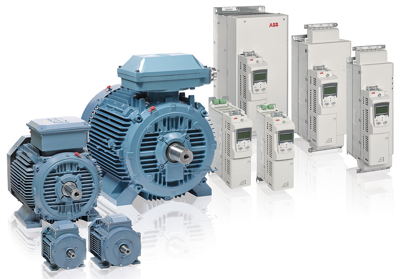One of the pilot users of ABB’s recently announced synchronous reluctance drive technology is reporting energy savings on 5–10% on top of the 25% it achieved with a standard ABB motor and drive installed just 12 months before. The Walter Mieli Group, an Italian textile producer, has installed the high-output version of the drive on its spinning machines.
Also taking part in the pilot programme is a Finnish forest products company called Kotkamills. According to its electrical officer Mikko Jääskeläinen, the new motor-and-drive package has been running for a month and has been performing as promised. “There are many advantages with this new technology,” he reports. “The simple design of the rotor is a big benefit compared with the standard induction motor. Its ability to perform without losses will provide better load and a cooler motor and, therefore, a longer lifecycle.”
ABB announced the SynRM synchronous reluctance motor-and-drive packages at the Hannover Fair in April with the claim that they will reduce power consumption in industrial applications by up to 40%. The motors incorporate a new type of laminated rotor that is robust, has no windings and operates with almost no losses.

The motor-and-drive packages (above) are being supplied in two versions: one optimised for maximum efficiency; the other for maximum output.
Compared to a conventional IE2 induction motor, the IE4 Super Premium Efficiency package is said to cut energy consumption by up to 40% and to provide a payback of less than two years in energy savings alone.
The motors in the High Output package can deliver the the same output as conventional induction motors two frame sizes larger. This will allow machine-builders to design smaller, lighter and more efficient equipment, says ABB.
The synchronous reluctance rotors need no magnets or cages, making the motors more robust and allowing them to operate at lower temperatures than induction motors. This, in turn, is said to prolong the operating lives of the bearings, extend the greasing intervals, cut maintenance and improve reliability.




